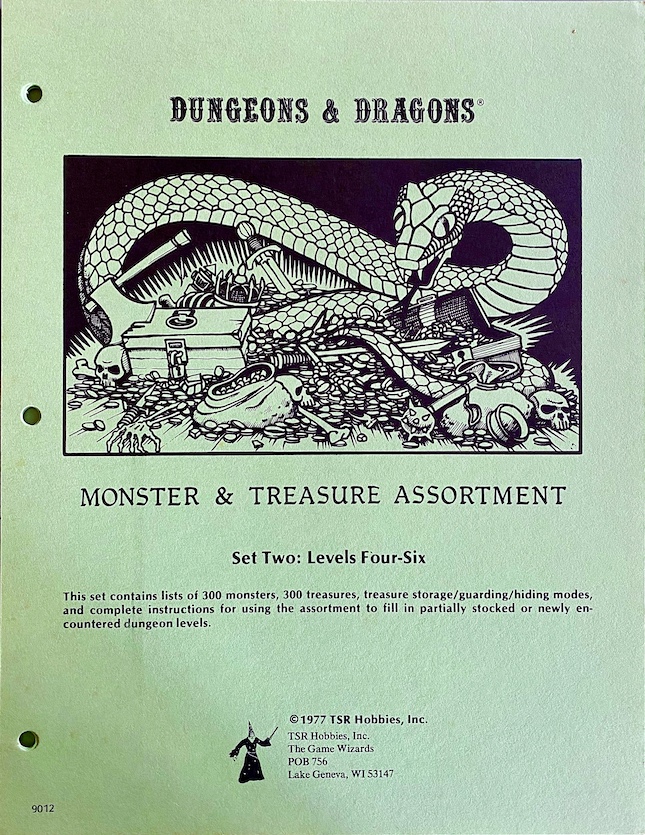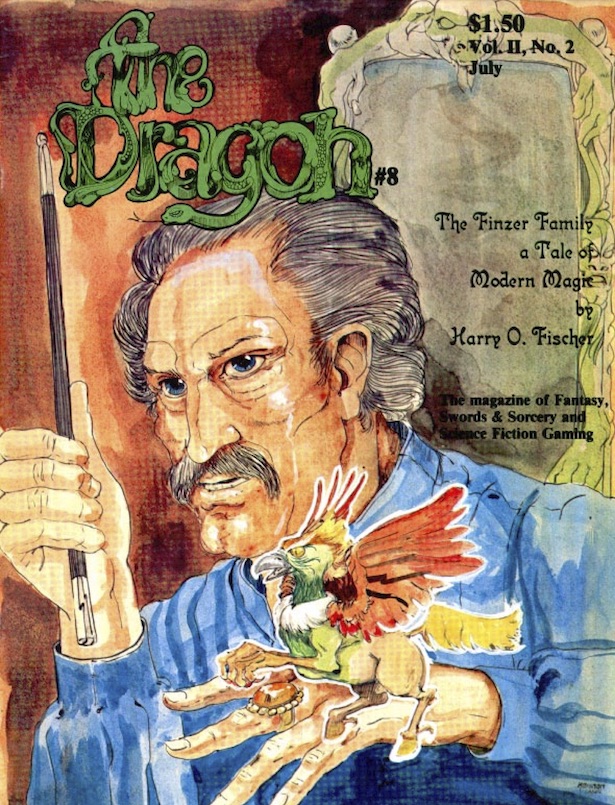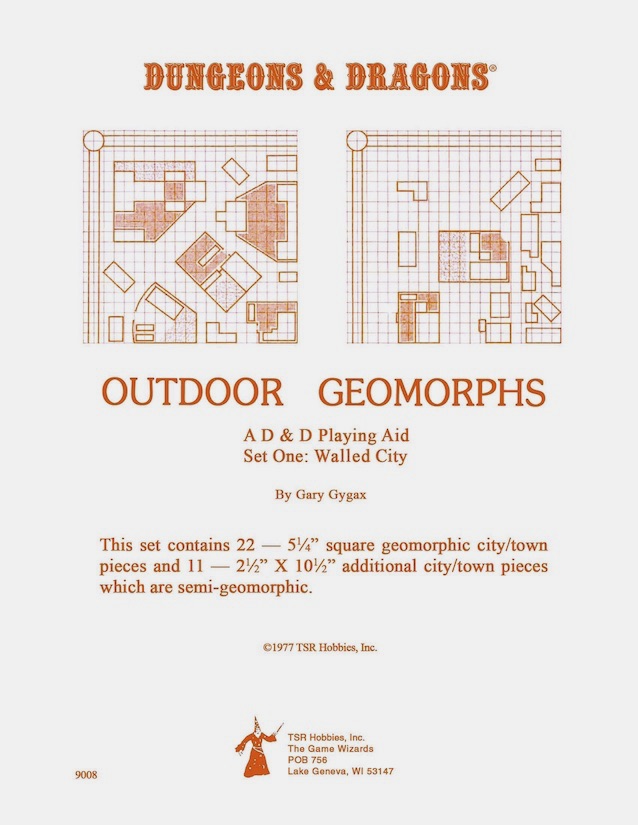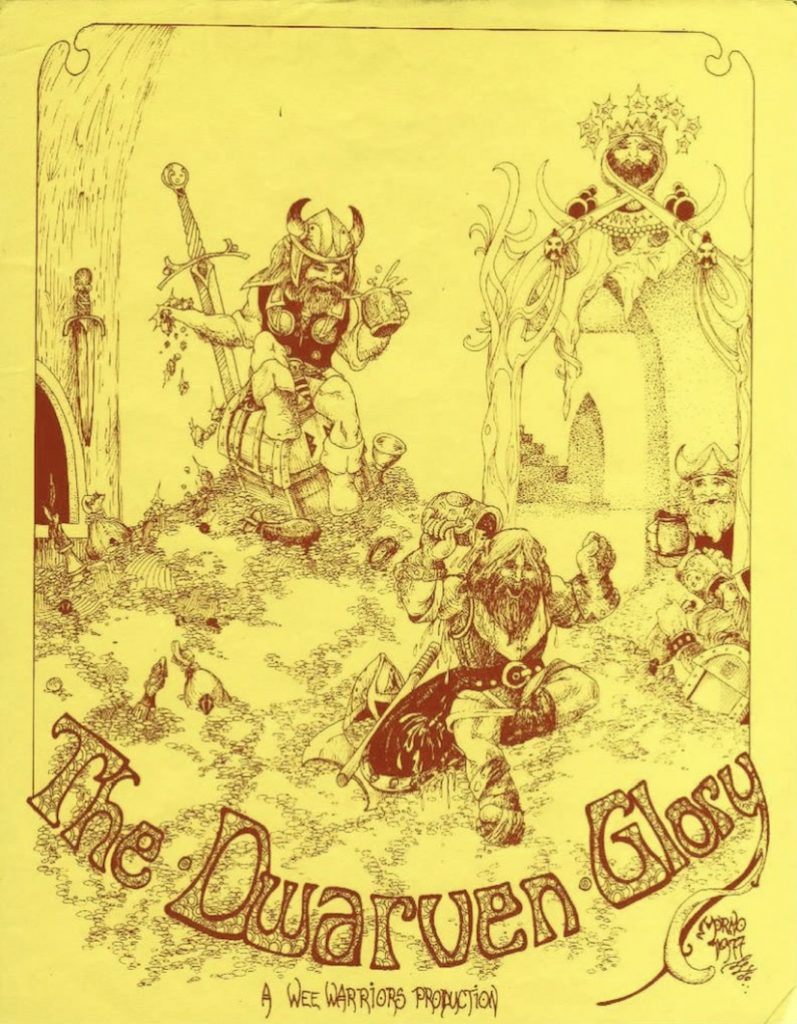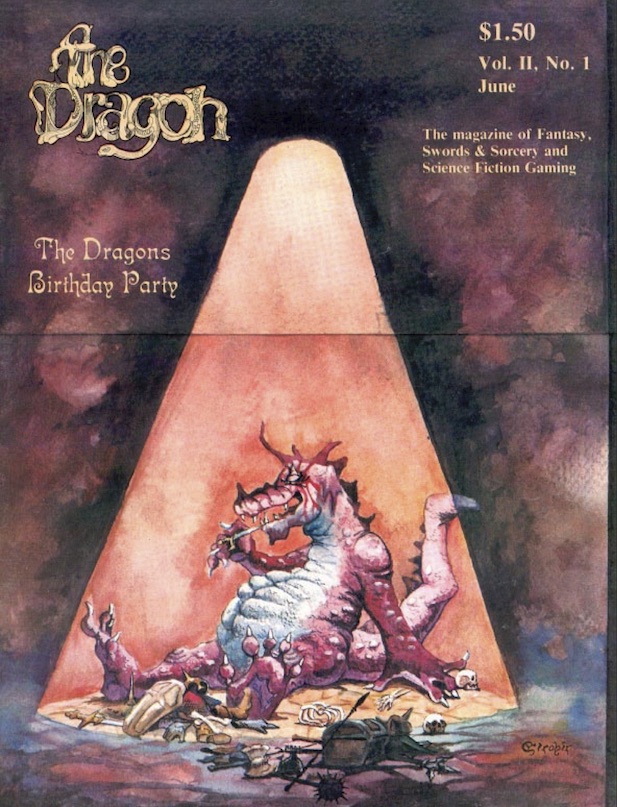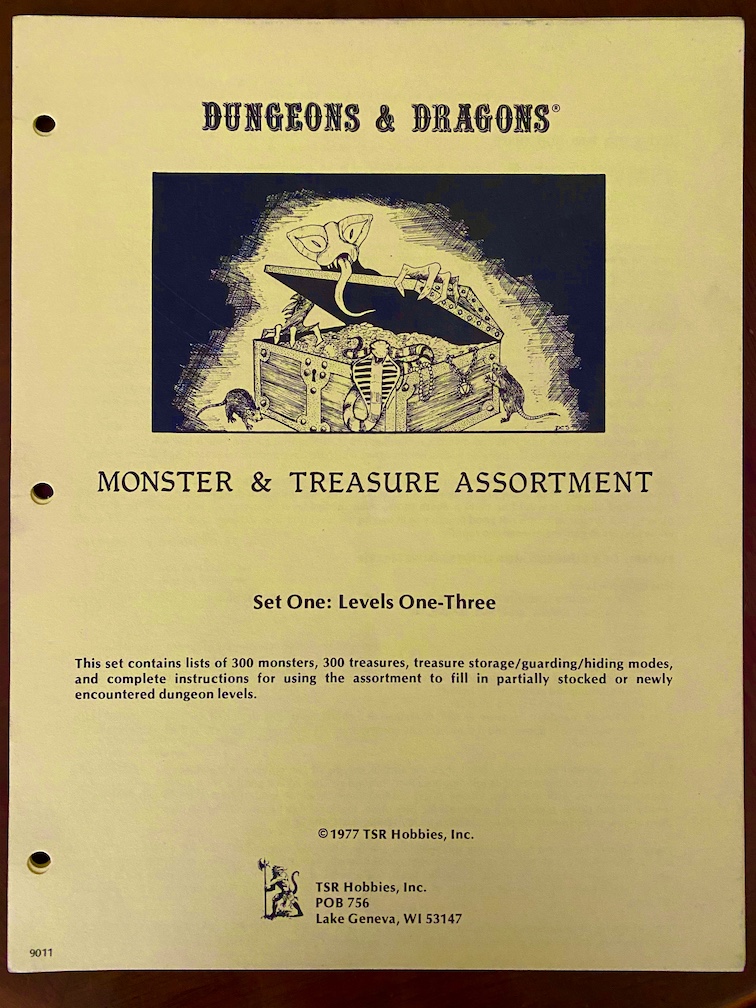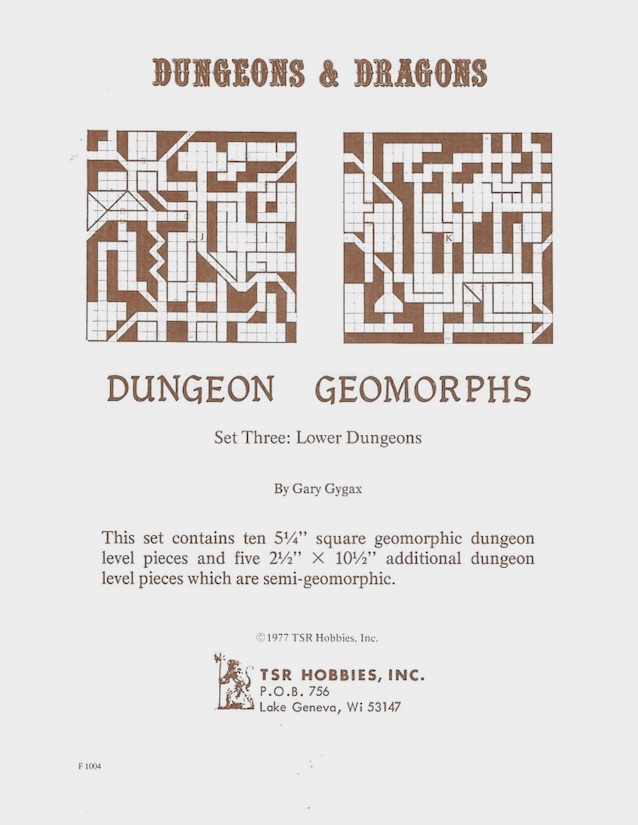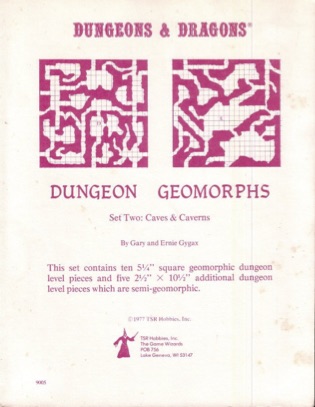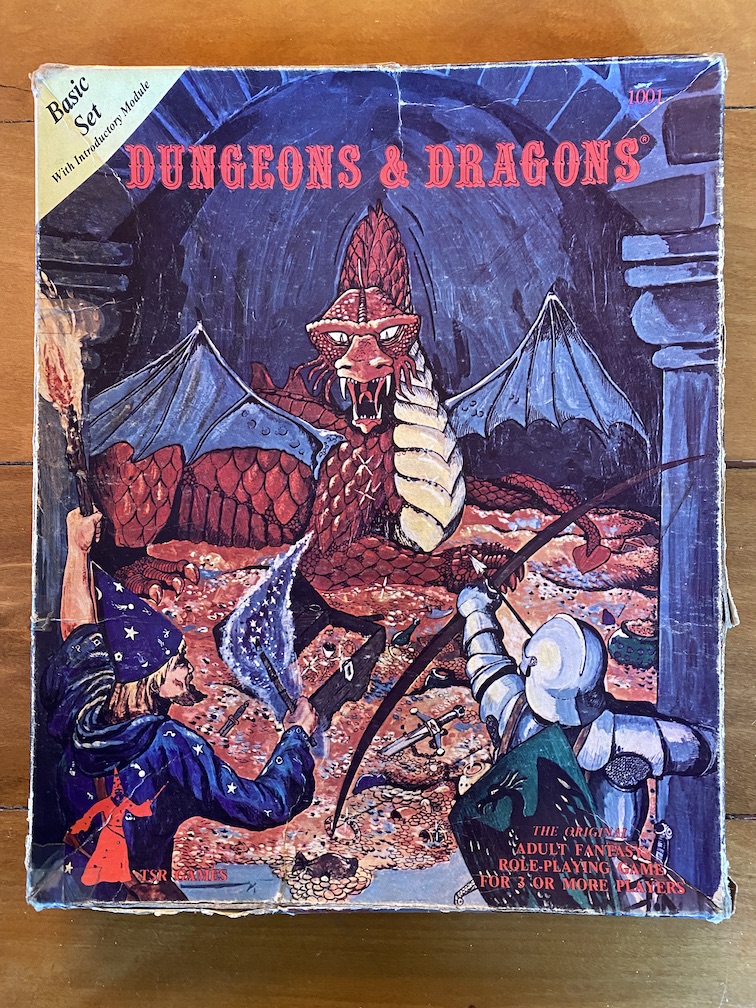
US D&D Basic Set
This may get long.
This is just a review of the Basic rule book. Coverage of the other items, such as the Geomorphs that came in the first printing and the B1 & B2 modules that came in later printings are dealt with separately.
I’ve been looking forward to reading this since starting this project. Basic was the first ever D&D I played. My brother bought the box set pictured above and he took me through B1. I can’t even remember how many sessions it took or how far I got.
It’s nice reading it now, having read all the preceding material. Back in the day, when I read the rule book for the first time, the stuff in the Foreword was like gobbledygook. Interesting that the Preface mentions AD&D even though it wasn’t available yet.
From the outset it’s apparent that much of the text is explaining the same things as in the original D&D, just with much greater clarity. For example: When rolling up ability scores, you’re allowed to adjust them. E.G., you can boost your Strength by 1 by reducing your Intelligence by 2 points. The original stated this information in a rather confusing manner. Holmes makes it very clear.
In some places, it’s almost word for word the same – e.g. the section on hiring NPCs. This can be confusing at times because it mentions something like encumbrance and then doesn’t give the weights for anything (whereas they were actually given in OD&D).
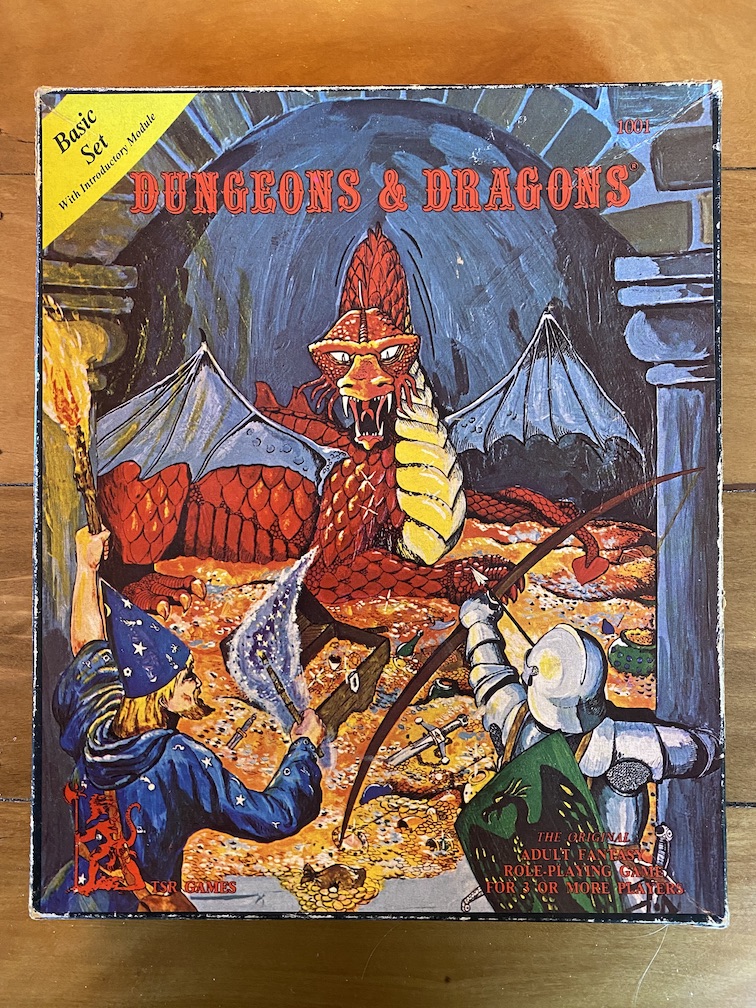
UK D&D Basic Set
What also stands out is how many references there are to AD&D, even though it wasn’t even published when this came out. E.g. “After they reach fourth level… refer to the more complete rules in AD&D”. It’s apparent that Basic D&D is just a stepping stone rather than the self contained thing that it would become in later iterations.
These rules are still pretty harsh compared to modern editions. You go down to 0HP – you die. You’re a first level Magic-User – you get 1 spell. You’re a first level Cleric – no spells for you! And Magic-Users aren’t allowed to bring their magic books into the dungeon. So to re-memorise a spell, they have to go out of the dungeon and spend a day in study! I guess with no healing spells available to the first level cleric, the party is going to be heading to the surface quite a bit anyway. (Which – allow me to indulge – is what it’s like playing your first level characters in the Apple II game, Wizardry – duck down, have one fight, head back to the surface – and pray you don’t encounter a wandering monster on the way!)
At least characters now get 1-3hp back for each day of rest back home. In the original, it was 0hp on the the first day of rest and then 1hp per day thereafter.
Speaking of time, the changes and clarifications around time/turns/rounds are vastly improved.
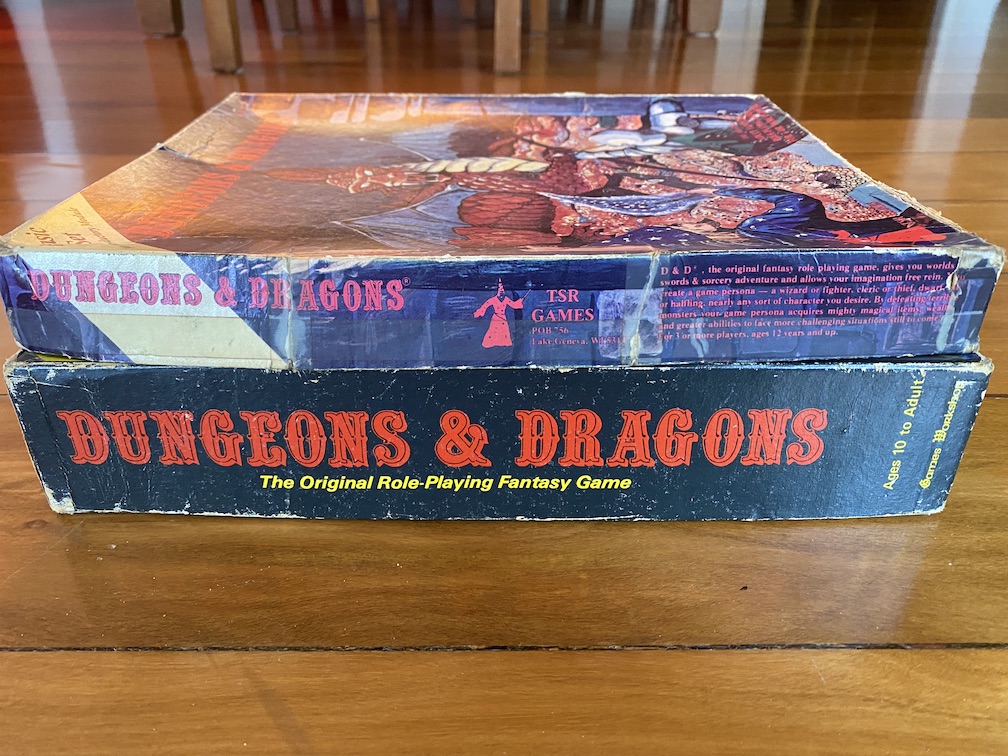
US on top, UK on bottom
Wait a second. What the heck is this? Am I reading these rules right? All characters, no matter what class, use the same combat table. And no matter what weapon they have, they all do 1-6 points of damage. And the to-hit is the same for all 3 levels. So by my reckoning, a first level magic-user with 3 Strength has just as much chance of hitting and doing the same damage with a dagger, as a third level fighter with 18 Strength and a sword! The only difference is the magic-user will generally have lower hit points and terrible armor class.
Huh. I guess in some ways that makes sense. The fact that first level magic users only have 1 spell and clerics have none is balanced by the fact they can dish out damage in the normal way.
Flicking back to original D&D, the to-hit varies by class but only once you get above level 3. I guess it stands out to me more because Basic is limiting itself to just those first 3 levels.
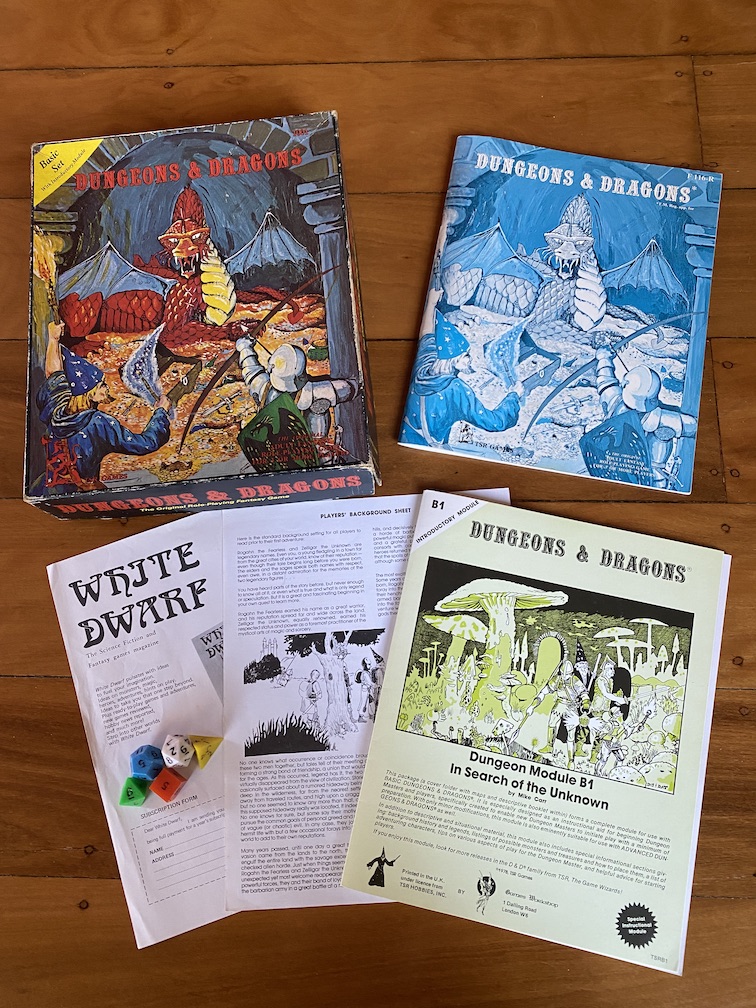
UK Basic Set contents
More stuff I find surprising:
- Daggers allow two hits per round – why would you ever use a sword!
- You don’t roll for initiative – whoever has the highest dexterity goes first.
Spells, for the most part, are the same as in the original plus Greyhawk. There are a few new spells as well.
There’s a section on fire and throwing flasks of oil. And one on holy water.
I haven’t got much to say about the monsters. Again, there’s some descriptions copied almost verbatim from the original and in other cases the text is clarified or modified. There are quite a few new monsters as well as a couple more giant and dragon types. A lot of the monsters would be rather challenging for a party of 1st-3rd level adventurers!
The same can be said for magic items. Some text is the same, other bits clarified. Some new items, others removed.
After this, there’s a nice section on the art of DMing which is much more extensive than what you get in the original, even if it is only a page worth.
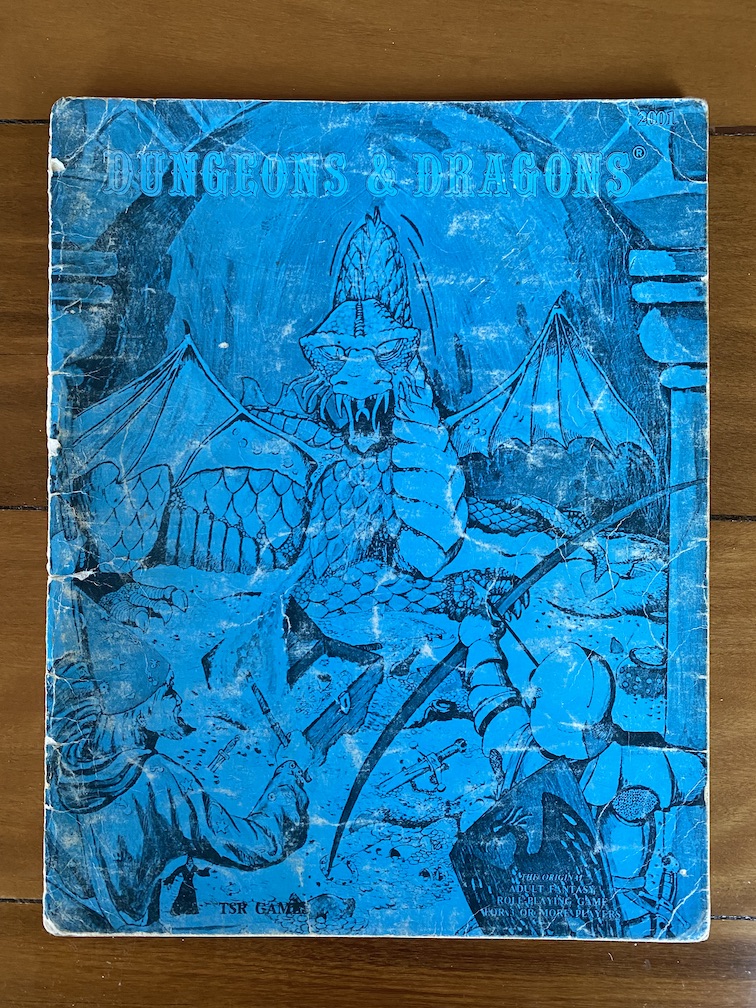
Australian Basic Rulebook – no white
And lastly we come to the sample dungeon – the Tower of Zenopus, entirely written by Holmes. Most striking is the detailed background story – full of flavour. The dungeon itself is a whole lot more realistic and makes more sense than the sample dungeon in Original D&D. It’s also fairly sparse. I guess that makes sense, considering it had to fit in several pages. It’s got giant rats, goblins, skeletons, pirates, and an evil magic user. What’s not to like?
Some notable things not included from Original + Supplements:
- No Strength adjustments – e.g. pluses to hit/damage/open doors
- Elves are purely multi-class fighter/magic user – no choice
- No fancy sub-classes like monks/assassins etc
- No hit location stuff, thank goodness
- No special damage by weapon type vs armor class
- In fact no different amounts of damage per weapon at all! (Unlike in Greyhawk.)
- No sword intelligence/ego
- No ships/underwater/outdoor/building castles
- No psionics, of course – pfew
Some notes on the design:
- They’re now rocking the Futura font (as opposed to Helvetica in the original and some other serif font in the supplements)
- the drawings are a definite step up in quality – the Sutherland cover is awesome!
There is way more information about Holmes Basic at these sites : https://sites.google.com/site/zenopusarchives/home
http://zenopusarchives.blogspot.com/
Image info
This the first D&D set my brother got – a 7th print Basic with those ridiculous chits and B2 in the box. Secondly, I have the Australian print rulebook (blue and black, no white on the cover). Lastly, I have a UK 4th print Basic Set.
Date info
The copyright date is 10th July 1977. There’s no reason to doubt this. The Acaeum says July. Of Dice and Men mentions July. Judges Guild issue N Aug/Sep mentions it.
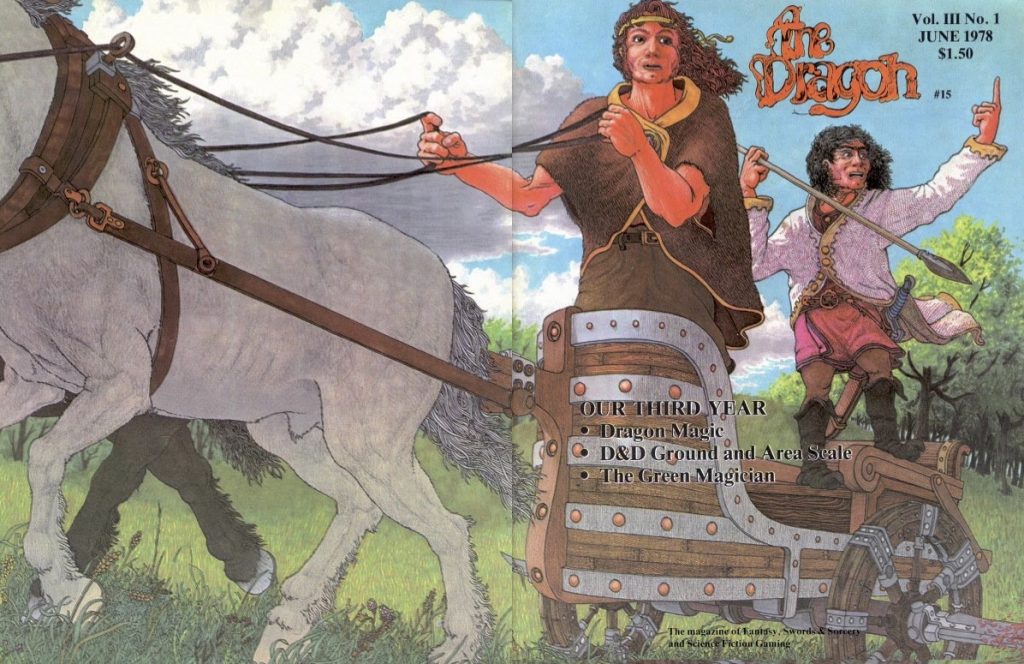 What’s new?
What’s new?
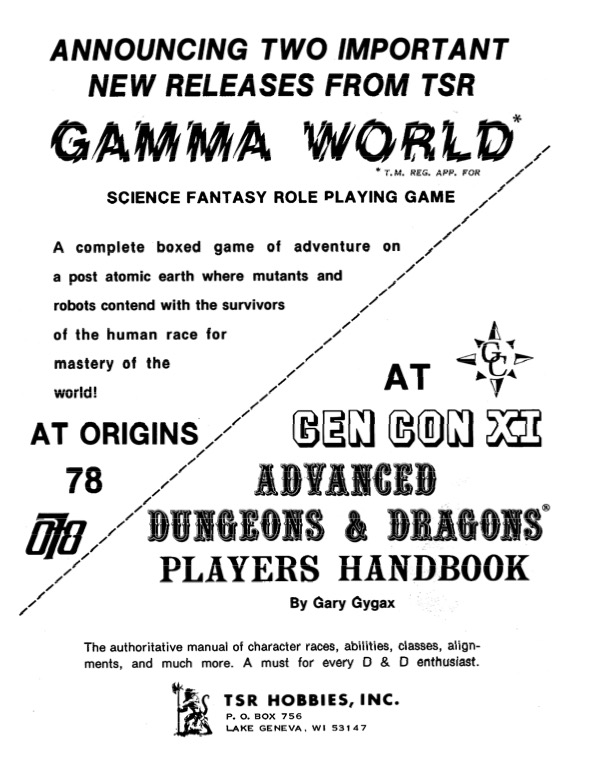 Articles
Articles
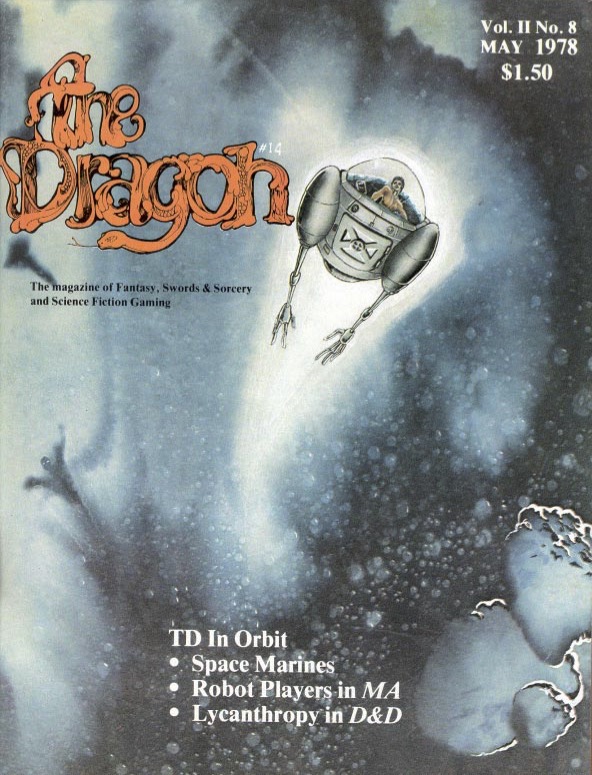
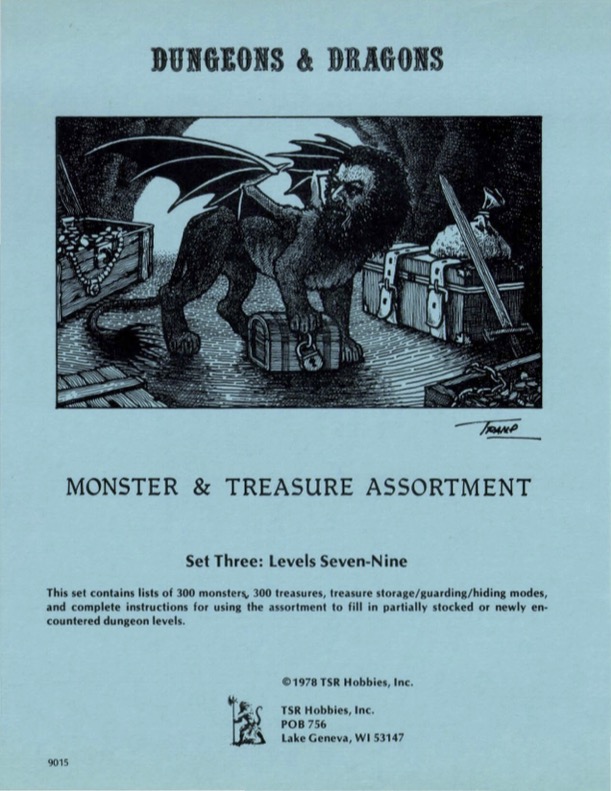
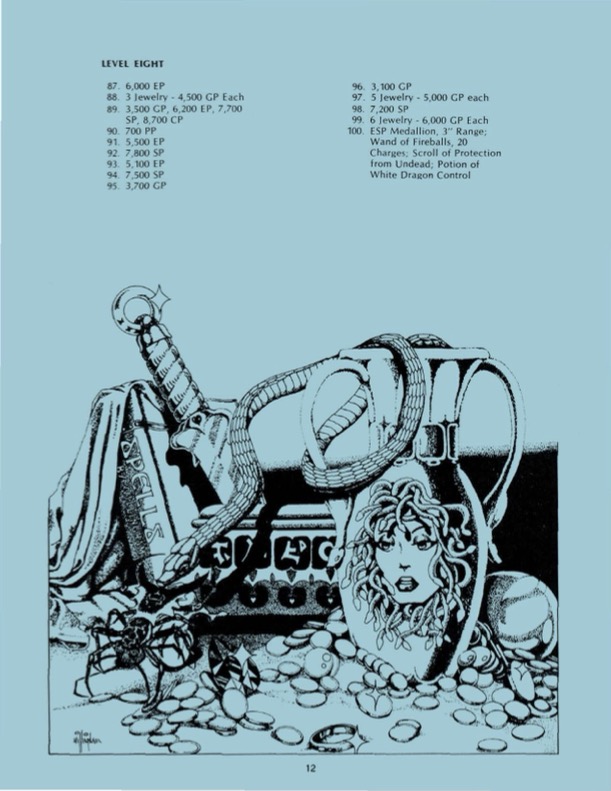
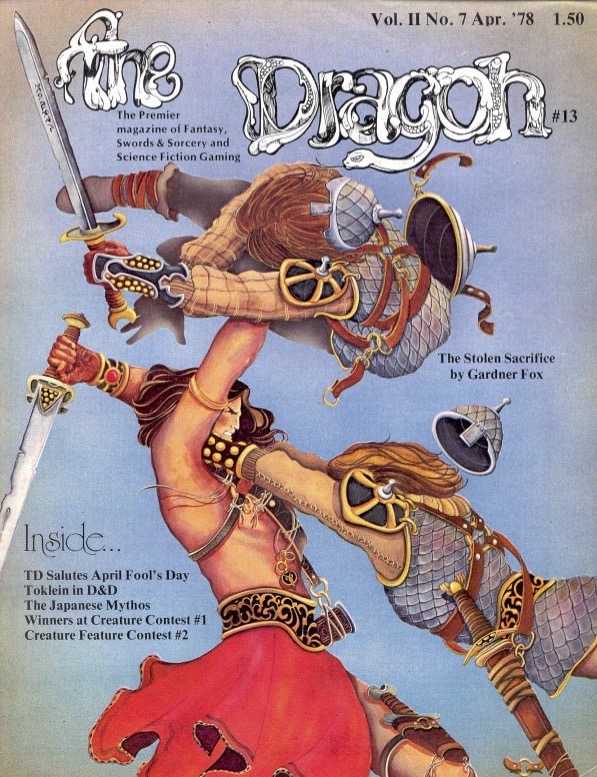
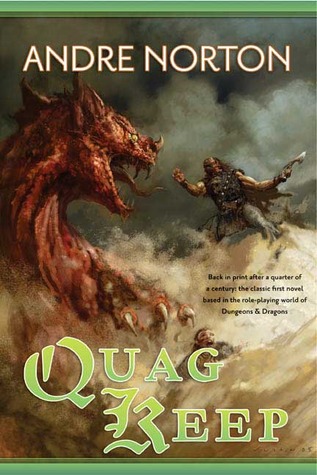
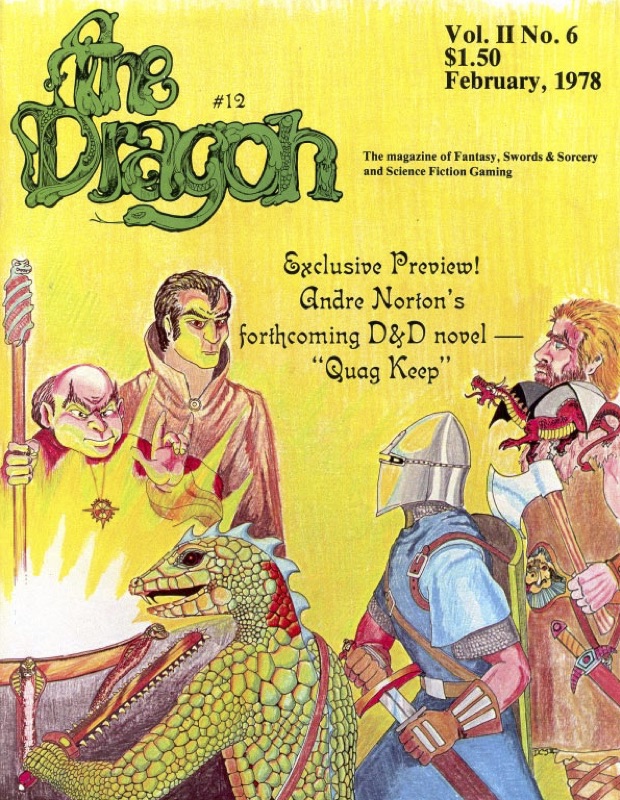
 Articles
Articles
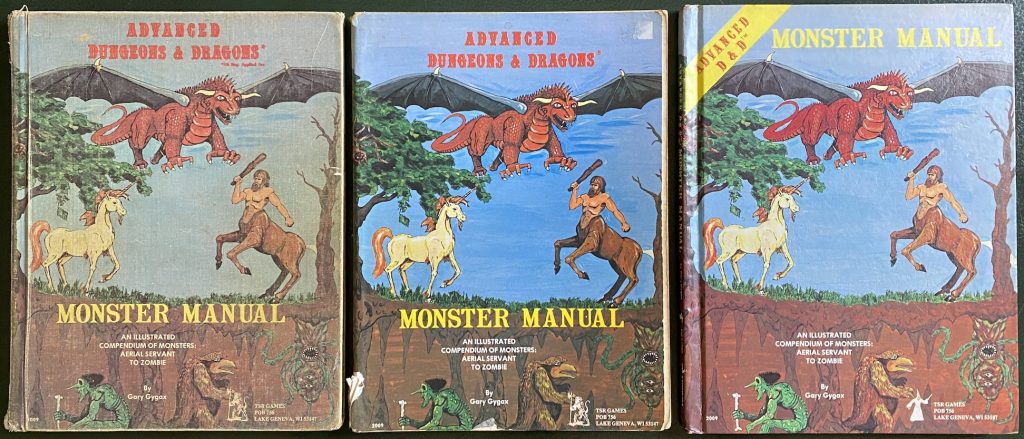
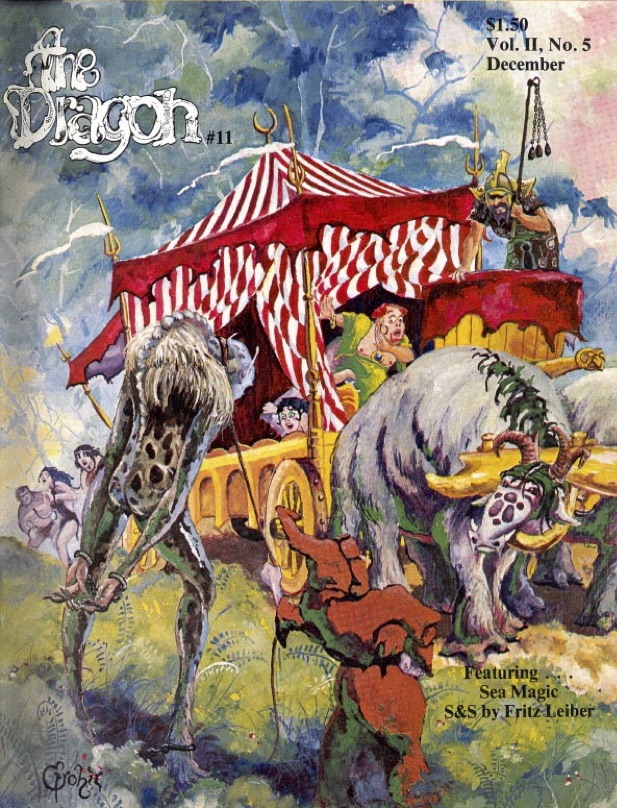
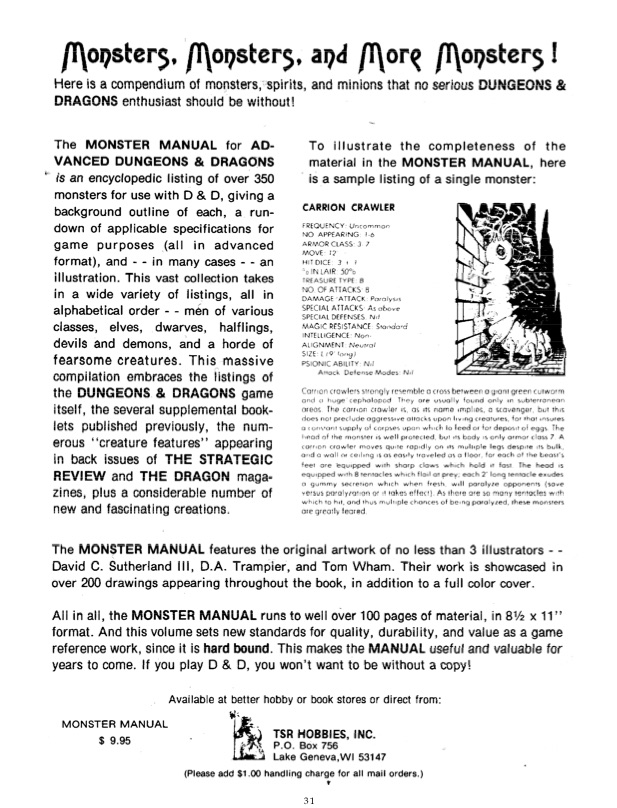
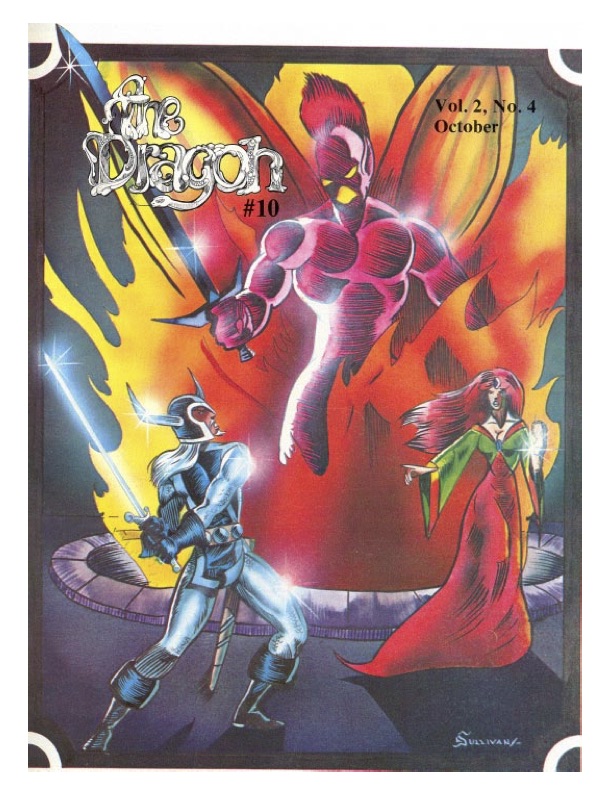
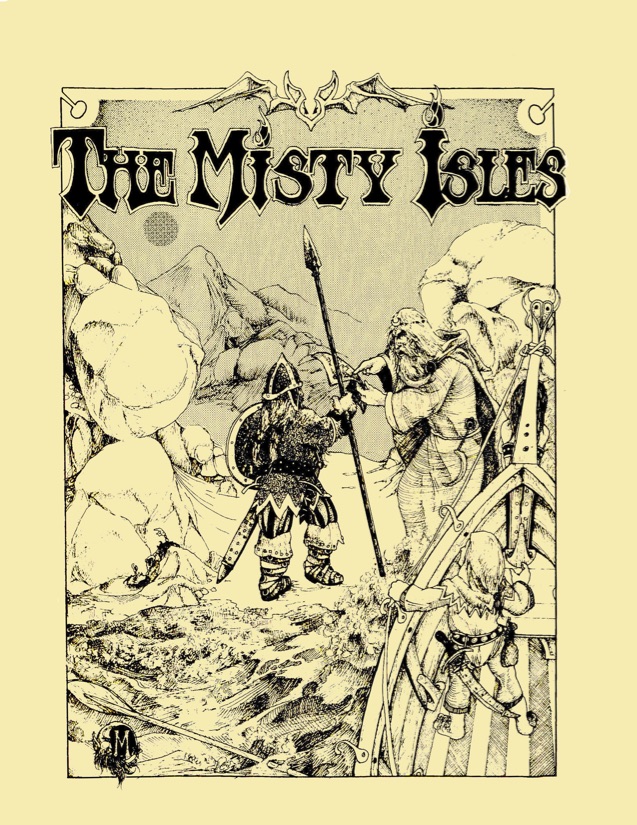
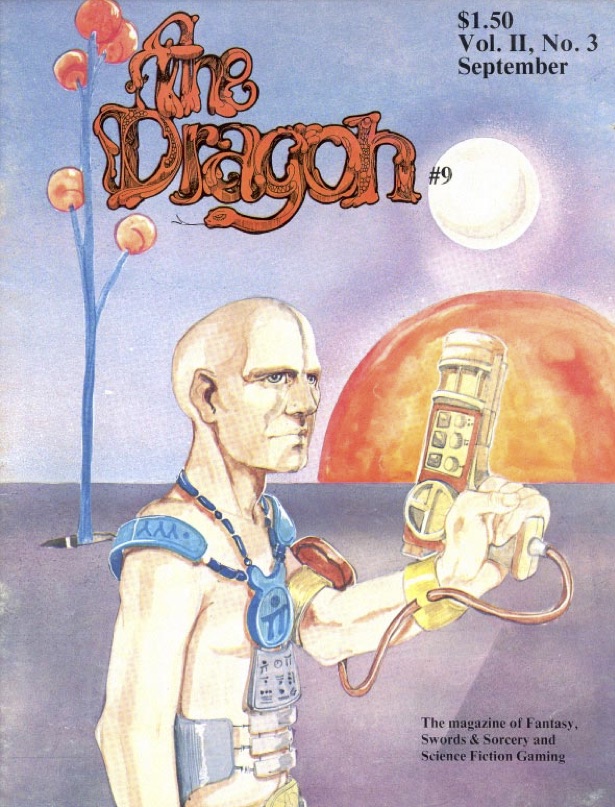
 US D&D Basic Set
US D&D Basic Set
 UK D&D Basic Set
UK D&D Basic Set
 US on top, UK on bottom
US on top, UK on bottom
 UK Basic Set contents
UK Basic Set contents
 Australian Basic Rulebook – no white
Australian Basic Rulebook – no white
